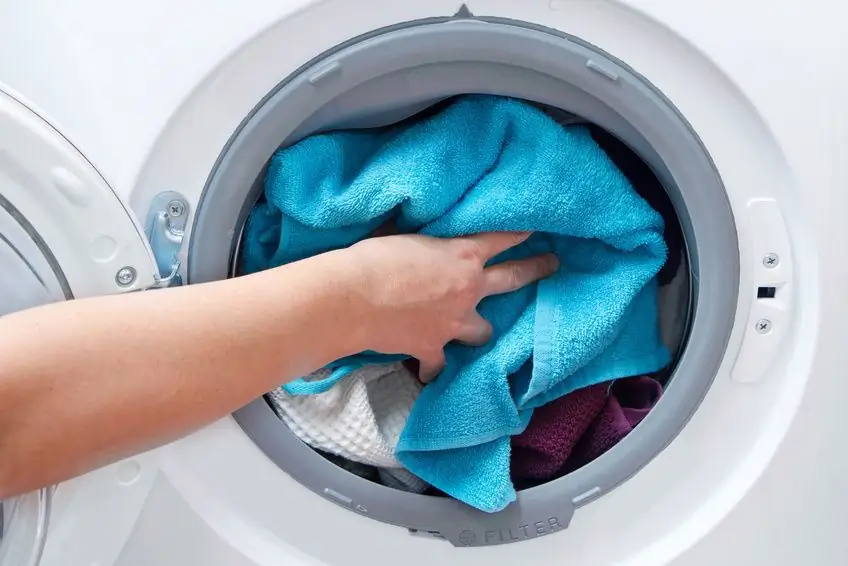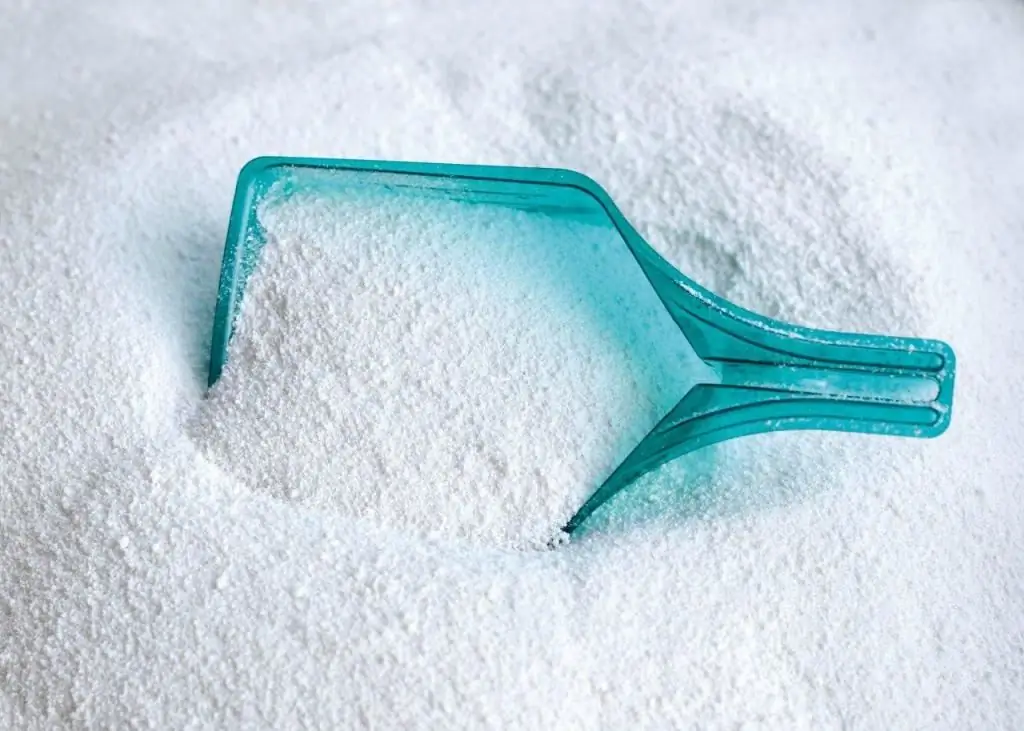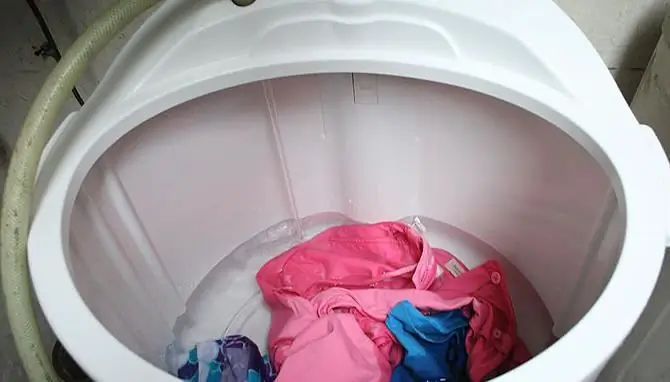2026 Author: Priscilla Miln | [email protected]. Last modified: 2025-01-22 17:55:21
Kindergartens are perceived by many parents as "inexpensive paid babysitting" that takes up their child's time, giving adults the opportunity to work and lead their lives. But children's institutions bring many benefits. Children in the garden do not just play, eat and sleep. Children are taught not only to answer the question: “How does the cat and the dog speak?” And they instill good manners, love for personal hygiene and introduce them to the concepts of the world around them.
In preschool institutions there is a regime where each lesson is worked out to automatism. So it is easier for children to get used to performing a series of actions, turning them into conditioned reflexes, positive skills and abilities. The washing algorithm in kindergarten is part of the process of accustoming a child to cleanliness.
Good habits are formed from early childhood

The sooner the child begins to learn the right habits, the easier he perceives them. Therefore, close attention is paid to the issue of hygiene in the younger groups of preschool children.institutions. Habits are fixed in the subconscious after repeated repetition. To do this, use methodological aids in pictures understandable to children: an algorithm for washing, washing hands, eating. Water procedures are among the right habits. It is important that the washing algorithm in the younger group is followed with strict sequence, then the desired result will be achieved.
It's wash time

Children get used to the fact that when returning from a walk, you should first wash your hands, and only then go to dinner. After breakfast, lunch and afternoon tea, all the guys wash their hands and wash their faces, washing off the remnants of food. Washing after eating is an important rule, since in the younger group children do not yet eat as carefully as older ones do. After a nap, babies rinse their faces with cool or warm water, turning washing into a ritual of awakening from sleep.
Water treatment venue

Comfort plays an important role in habit formation. Washbasins should be located at a height convenient for the baby. Liquid soap with a dispenser is preferable to regular solid soap. Water should be warm or cool. Educators first regulate the temperature of the water, and only then bring the children in turn to the sink. The skin of the face is much more sensitive than the skin on the hands, so too cold or hot water can cause discomfort in the child and discourage the desire to come into contact with water for a long time. It is important to ensure that soap does not get into the eyes of the child,in advance, educators explain exactly how it is worth washing hands and face, focusing the attention of children on the fact that soap, getting into the eyes, stings strongly. Everyone should have their own personal towel, over which there is usually a picture. The same picture is on the individual locker and on the bed of each baby.
Visual perception of the algorithm
The washing algorithm in pictures should be located next to or above the washbasins. Children see the order of the actions performed and remember them. In addition, the child must see himself in the mirror opposite the sink. It is important for a three-year-old baby to see the result of his actions: at first the face was dirty, and then it became clean. Each kid knows his picture above the towel, where an elephant or a chicken is drawn. So children learn to perceive the belonging of objects, for example, with a teddy bear - this is his towel, and with a turtle - someone else's. It is important that the guys remember visually the place where their towel hangs, as using someone else's towel is unhygienic.
Maintaining the washing ritual at home

Many parents are annoyed when their child drags them to the bathroom every five minutes, smeared with paints, jam, yogurt or something else. This is due to the fact that in kindergarten they instill the habit of washing soiled faces and hands. Children get dirty all the time, this should be taken calmly. Of course, parents do not need to hang pictures all over the house, but the washing algorithm is also familiar to them. Therefore, they can support the desire of theirchild to purity. When a slut asks to go to the bathroom to wash his hands or wash, do not ignore it.
For independent kids, you can put a small chair in the bathroom, hang its towel low. You should show the child that he can wash himself when it is necessary for him. When the bathroom has already been mastered, it is still necessary to observe that the tap does not remain open after water procedures. If the baby is not yet so independent, then parents will still have to control the process of washing.
Washing is an important habit for a two to three year old child. The sooner he learns that he must be clean, the easier it will be to interact with him when the crisis of three years comes and the child begins to resist everything in the world. At the time of the crisis, it is difficult to force the sequence of the entire washing algorithm to be carried out. Therefore, it will be much more difficult to teach him to rinse his face. Educators of younger groups of kindergartens teach to perform the necessary rituals, creating useful skills based on them.
Recommended:
Which washing powder washes better: names, washing quality and tips from housewives

Which washing powder is the best? When answering this question, you should pay attention not to the commercials offered by television, but to certain features of the product, its composition and reviews left by housewives in his address. Let us further consider the main criteria for choosing a washing powder, as well as a list of the best products from this series
Why are towels stiff after washing in the machine? Washing tips

After purchasing terry towels, everyone wants to enjoy their softness for a long time. Unfortunately, a situation often arises when, after a small number of washes, such products lose their tenderness. This is the result of improper care
Washing soda: composition, instructions for use and washing tips

Washing soda is an all-purpose cleaner. In those days, when there were not so many such funds as now, it was she who came to the aid of housewives. Soda ash is a powder that consists of small and large white crystals. It is called laundry or washing soda
Detergent for washing down jackets. "Domal" - a means for washing down jackets

Are you the proud owner of a beautiful, warm down jacket? It needs to be washed periodically. How to do it right? Now the industry produces various compositions for washing and cleaning products made of fluff. What is the best detergent for washing down jackets? How to wash the product correctly so that it serves for a long time and pleases with its appearance? Can the wrong detergent harm a down jacket? Our article will answer these and other questions
Which washing powder is better: reviews. Washing powder: a review of funds

Despite the fact that every year in the field of development of laundry detergents, according to manufacturers, there is a revolution, the basic chemical composition of powders, in fact, does not change. No matter how good the washing powder may seem, independent consumer reviews will help to evaluate its main qualities more adequately than any advertisement

